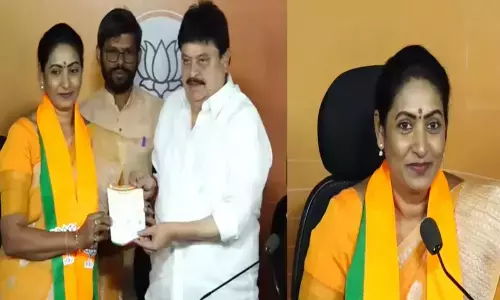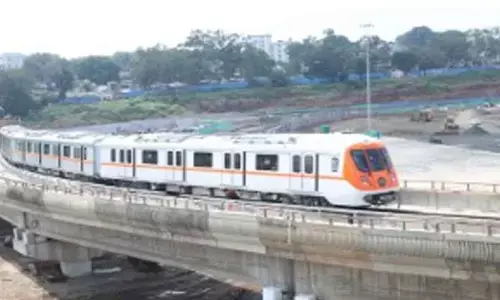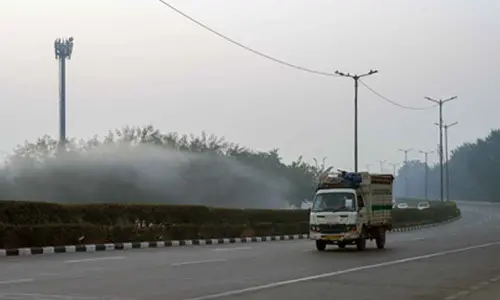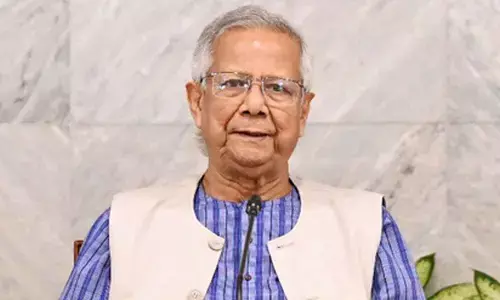SEZs – SC lifeline for land deprived

When the Apex Court delivered its judgment in Kedarnath Yadav Vs State of West Bengal & Others i.e., Singur Judgement, directing the government to return the land sometime back, a natural corollary that arose was whether those affected by the special economic zones (SEZs) in the country would sit up and take notice of the same to seek remedial action in their cases too.
More than 77% of notified SEZ land is concentrated in four states – Andhra Pradesh, Gujarat, Maharashtra and Tamil Nadu. These States have acquired 35,415 hectares out of 45,782 hectares of total land acquired by the 20 states. Besides the SEZ developers have been allowed to purchase agriculture lands with support of local governments. What is important here is these four states are also among the States with high ratio of unutilised SEZ land
When the Apex Court delivered its judgment in Kedarnath Yadav Vs State of West Bengal & Others i.e., Singur Judgement, directing the government to return the land sometime back, a natural corollary that arose was whether those affected by the special economic zones (SEZs) in the country would sit up and take notice of the same to seek remedial action in their cases too.
They did just that.
The farmers and the agricultural labour affected by the SEZs in AP knocked on the doors of the Supreme Court seeking justice to them on the lines of Singur.
Several disturbing questions were raised by the petitioners. Proper relief was not being given to them and no compensation was being paid despite the lands lying vacant for a longtime. T
he land was neither being returned to the tribals, farmers and other weaker sections despite several pleas. All this has led to severe livelihood crisis, mass migration, fodder crisis for cattle, increasing debt burden on farmers leading to farmers suicides which is against the fundamental rights under Constitution of India.
The Special Economic Zones Act, 2005, was passed by Parliament in May, 2005. After extensive consultations, the SEZ Act, 2005, supported by SEZ Rules, came into effect on February 10, 2006, providing for drastic simplification of procedures and for single window clearance on matters relating to Central as well as State governments.
The main objectives of the SEZ Act were listed as generation of additional economic activity, promotion of exports of goods and services, promotion of investment from domestic and foreign sources, creation of employment opportunities and development of infrastructure facilities.
The functioning of the SEZs is governed by a three-tier administrative set-up. The Board of Approval is the apex body. It has 19 Members and is headed by the Secretary, Department of Commerce, Union of India. The Approval Committee at the Zone level deals with approval of units in the SEZs and other related issues.
Each Zone is headed by a Development Commissioner, who is ex-officio chairperson of the Approval Committee.
Land being a State subject, such a land for Special Economic Zones (SEZs) is made available by the State governments as per their respective policy and procedures. State governments have been advised that in case of land acquisition for SEZs, first priority should be for acquisition of waste and barren land and if necessary single crop agricultural land could be acquired for the SEZs.
If perforce a portion of double cropped agricultural land has to be acquired to meet the minimum area requirements, especially for multi-product SEZs, the same should not exceed 10% of the total land required for the SEZ.
The Board of Approval for SEZs only considers those proposals, which have been duly recommended by the State government. Further, the State governments were informed on June 15, 2007 that the Board of Approval would not give its nod to any SEZs where the State governments had carried out or proposed to carry out compulsory acquisition of land for such SEZs after April 5, 2007.
The SEZ developers are encouraged to operationalise their respective SEZs at the earliest. Any denotification of a SEZ is carried out only after the State Government concerned has given its ‘No Objection’ for the same. (This information was given by the Minister of State (Independent Charge) in the Ministry of Commerce & Industry Nirmala Sitharaman in a written reply in Rajya Sabha).
As opposition to the bill proposing amendments in the Land Acquisition and Rehabilitation and Resettlement Act, 2013, intensified within and outside the Parliament, the government provided data on un-utilised land acquired for SEZ in 20 states of the country.
A major argument made by the government and supporters of the corporate-led growth in favour of the bill amending the Land Acquisition and Rehabilitation and Resettlement Act 2013 was unavailability of land for the industrialisation.
The data provided by the government in an answer to a Rajya Sabha question about the land acquired and used for the Special Economic Zones, however, makes a telling story of the exploitation. In its report on SEZ lands, CAG also found land being diverted to other uses like real estate and not adhering to the conditions like generating employment.
The government has also admitted to the fact in the Rajya Sabha that as high as 40% of the total land acquired for SEZ across 20 states of the country remains unutilised up to March 13, 2015. In a written reply to a Rajya Sabha question, Nirmala Sitharaman provided following figures on the unutilised land in various state of the country.
In four states 100% of the SEZ land acquired remains unutilised, while in seven out of 20 states 50% of the total land acquired under SEZ remains unutilised. In six other states from close to 40% to 50% of the total land acquired for SEZ remains unutilised.
The states with 100% unutilised land are Nagaland, Manipur, Goa and Jharkhand. Some of the states with high rate of unutilised SEZ lands include Chhattisgarh (78.24%), Haryana (70.69%), Rajasthan (82.31%), Uttar Pradesh (63.24%), Tamil Nadu (53.08%), Punjab (67.04%) and Chandigarh (59.60%).
Another interesting fact is more than 77% of notified SEZ land is concentrated in four states – Andhra Pradesh, Gujarat, Maharashtra and Tamil Nadu. These states have acquired 35,415 hectares of land out of 45,782 hectares of total land acquired by the 20 states.
Besides the SEZ developers have been allowed to purchase the agriculture lands with the support of local governments. What is important here is these four states are also among the States with high ratio of unutilised SEZ land. About 20% of the total SEZ land remains unutilised in Andhra Pradesh (united AP); about 39% in Gujarat; 47% in Maharashtra and 53% of the SEZ land in Tamil Nadu remain unutilised.
The land acquired for SEZs is but a small share of the total land acquired for numerous projects by the government in the name of development. In fact, there is no record of the total land acquired under the now redundant Land Acquisition Act 1894 and various other Union and State government acts, still in effect, designed to acquire private land for public purposes.
How much of that land remains unutilised is also not known. According to a government committee on land reforms, more than 2.1 million hectares of agricultural land has been transferred for non-agricultural purposes between 1990 and 2003.
According to the CAG's latest report, of the 50 special economic zones (SEZs) that were approved, only 15 are operational, six had been denotified and as many as 29 are still to start commercial activities.
The youth are waiting for huge employment opportunities because of the SEZs but a mere sample CAG officials took of a dozen industrial units revealed that out of the projected employment opportunities of 12.47 lakh, only 42,000 offers could be generated.
This, according to the CAG, meant a shortfall of nearly 93 per cent. Gujarat's situation is no different from that of the country. As many as 625 SEZs were approved and only 152 of them are operational with a whopping 93 per cent shortfall in employment generation.
For all its claims, Gujarat, along with Andhra Pradesh, Tamil Nadu, Karnataka and Maharashtra, makes up for as much as 57 per cent of the gap in the investment in the SEZs.
Let us await the view of the Apex Court, the sole saviour of our Constitutional Rights and livelihoods as the custodian of the same, the government, seems to be anyway against us.




















